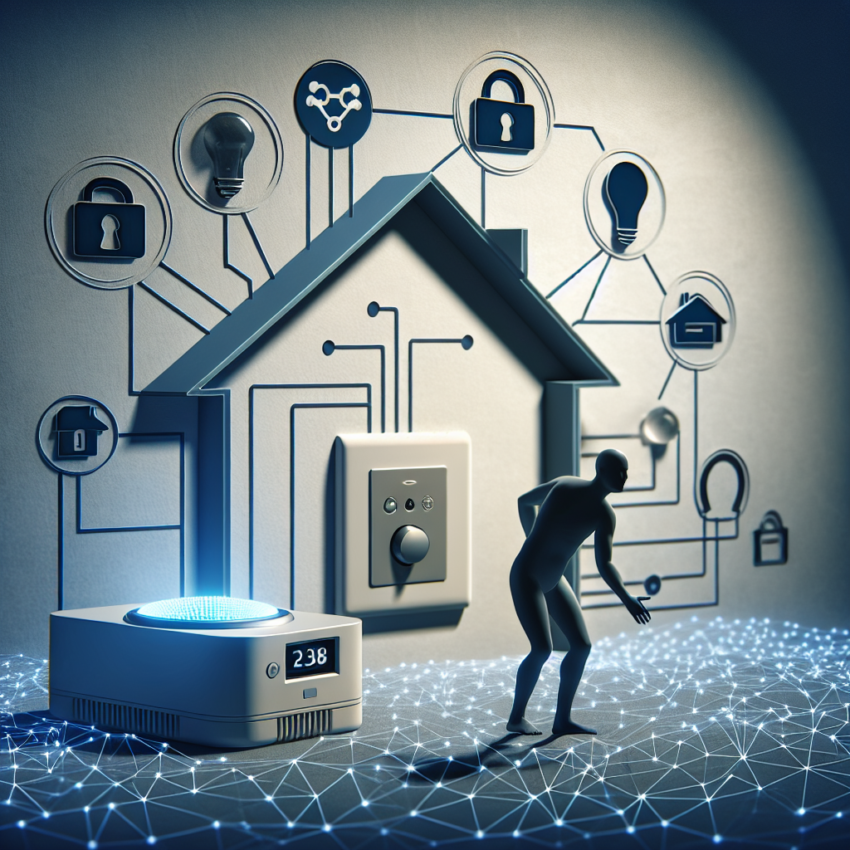With the rise of smart homes, home automation hubs have become central to managing various connected devices seamlessly. These hubs offer convenience, efficiency, and enhanced control over your living environment. However, as with any technology that connects to the internet, security is a paramount concern. This article delves into whether you can hack into your home automation hub to test its security, the ethical considerations involved, and best practices to ensure your smart home remains secure.
Understanding Home Automation Hubs
Home automation hubs act as the central controller for your smart devices, allowing you to manage everything from lighting and heating to security systems and entertainment gadgets. Popular hubs include products like Amazon Echo, Google Nest, and Samsung SmartThings. These hubs communicate with various devices through protocols like Wi-Fi, Zigbee, or Z-Wave, creating a network that enhances the functionality and convenience of your home.
The Importance of Testing Security
As smart homes become more prevalent, the potential for security vulnerabilities increases. Testing the security of your home automation hub is crucial to protect your personal data, ensure the integrity of your connected devices, and prevent unauthorized access. A compromised hub can lead to privacy breaches, unauthorized control of devices, and even physical security risks if integrated with door locks or security cameras.
Ethical Considerations: Legal Implications of Hacking
Before attempting to hack into your home automation hub, it’s essential to understand the ethical and legal implications. Unauthorized access to devices, even your own, can sometimes violate terms of service agreements or local laws. Ethical hacking, also known as penetration testing, involves performing security assessments with permission and within legal boundaries. Always ensure you have the right to test the security of your hub and avoid actions that could be construed as malicious hacking.
Methods to Test Your Hub’s Security
Penetration Testing
Penetration testing involves simulating cyber-attacks on your home automation hub to identify vulnerabilities. This process typically includes network scanning, vulnerability assessment, and exploitation of identified weaknesses in a controlled and ethical manner. Tools like Metasploit or Nessus can aid in conducting thorough penetration tests.
Vulnerability Scanning
Vulnerability scanners are automated tools that scan your hub and connected devices for known security flaws. Regular scanning helps in identifying and addressing vulnerabilities before they can be exploited by malicious actors. Keep your devices’ firmware and software up to date to mitigate potential threats discovered through vulnerability scans.
Employing Security Tools
Utilizing security tools such as firewalls, intrusion detection systems (IDS), and antivirus software can bolster the security of your home automation hub. These tools monitor incoming and outgoing traffic, detect unusual activities, and prevent unauthorized access attempts, providing an additional layer of protection.
Best Practices for Securing Your Home Automation Hub
- Regular Updates: Keep your hub’s firmware and software updated to patch known vulnerabilities.
- Strong Passwords: Use complex and unique passwords for your hub and associated accounts to prevent brute-force attacks.
- Network Segmentation: Isolate your home automation devices on a separate network to minimize the impact of potential breaches.
- Two-Factor Authentication: Enable two-factor authentication (2FA) where possible to add an extra layer of security.
- Disable Unnecessary Features: Turn off features or services that are not in use to reduce potential entry points for attackers.
Potential Risks and How to Mitigate Them
While testing the security of your home automation hub is beneficial, it’s essential to be aware of the associated risks. Unintentional changes or misconfigurations during testing can disrupt the functionality of your smart home. To mitigate these risks:
- Backup Configurations: Regularly back up your hub’s settings and configurations to restore them in case of issues.
- Use Controlled Environments: Conduct tests in a controlled setting to prevent unintended disruptions to your daily life.
- Stay Informed: Keep abreast of the latest security threats and best practices to ensure your testing methods remain effective and safe.
Conclusion
Testing the security of your home automation hub is a proactive step towards safeguarding your smart home against potential threats. By understanding the ethical and legal implications, employing effective testing methods, and adhering to best security practices, you can significantly enhance the security of your connected devices. Remember to approach security testing responsibly, prioritize the protection of your personal data, and stay informed about evolving security challenges to maintain a secure and efficient smart home environment.

